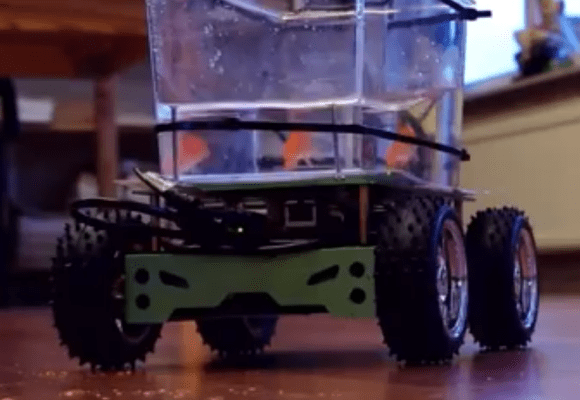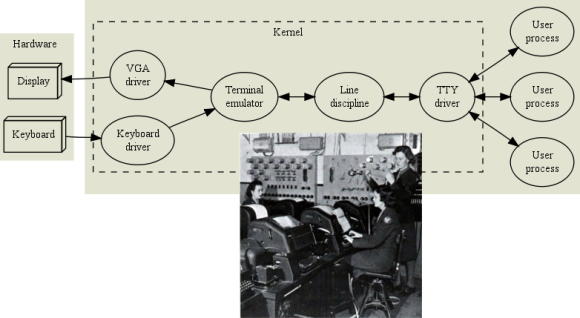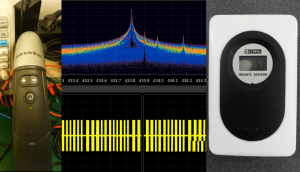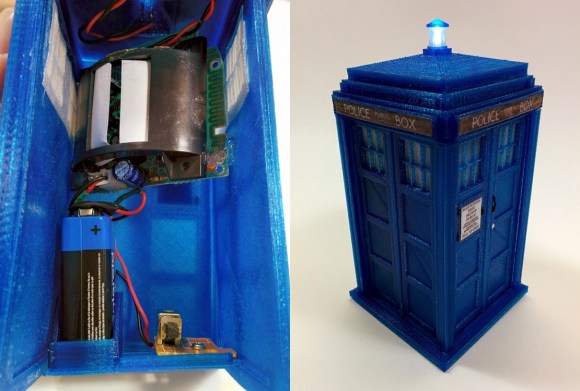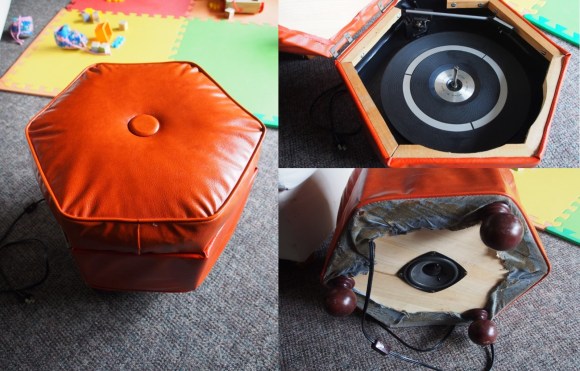
Remember the good old days in the 60’s and 70’s when stereos were built right into the furniture? No? Well, that’s where the inspiration for this project comes from. Introducing the Ottoman Empire — a pun so bad we’re not even going to repeat it here.
[Alec] was inspired by Blaupunkt, which is a German manufacturer of electronics who used to make a line of very nice cabinet stereos (examples) which blended furniture and electronics quite exquisitely.
He had recently finished off a rather cool 8-track data backup system, and was left with a spare BSR record player — or as he likes to call it, the “Ford Pinto of record players.” He decided to turn it into something useful by integrating it into a Naugahyde Ottoman that he picked up from a local vintage store. The problem with old furniture like that? No structural elements — it was actually just packed full of shredded wood! He cleaned it all out though and then proceeded to make his own wooden frame to support the BSR — he’s done a great job modifying it to fit, and even hiding all the electronics to make it very presentable.
Now all he needs to do is add a pressure switch in the top so when he kicks back to relax it starts playing some Chopin.

